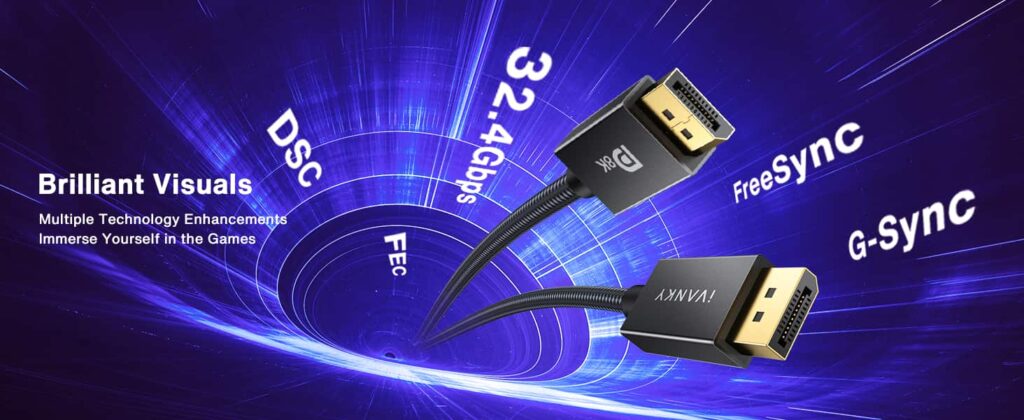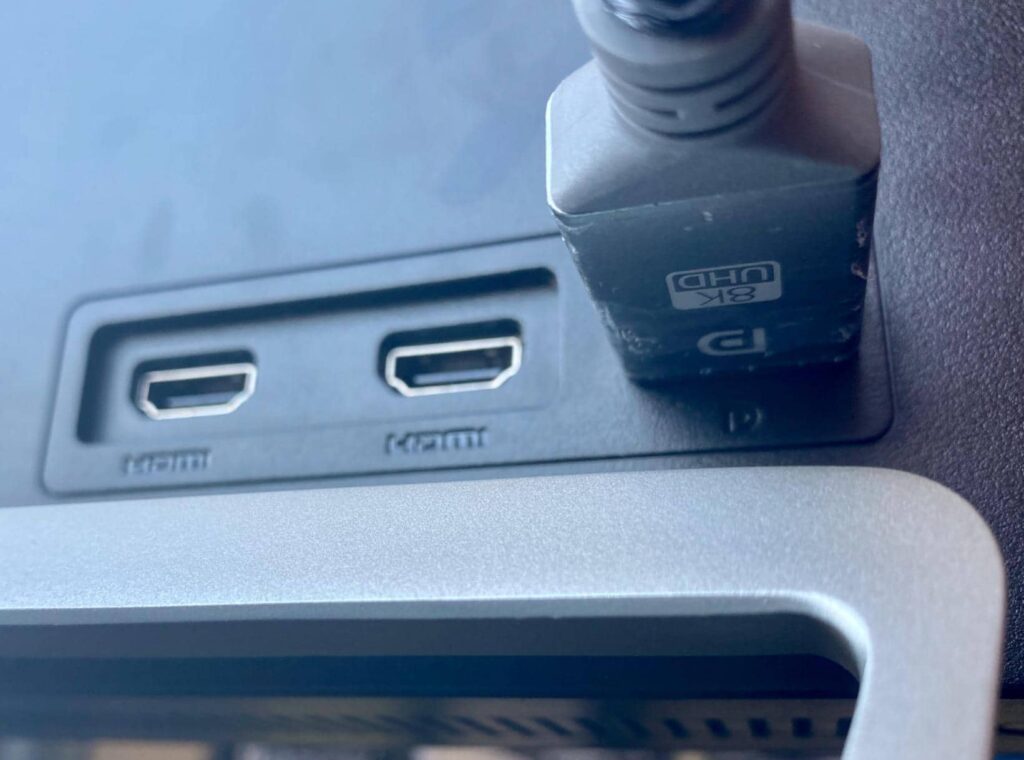Connecting your computer to other devices such as a monitor or TV should be as good as possible. For this connection, the best thing you can currently use is DisplayPort. Poor connections or quality can affect the quality of your image.
Now we will explore everything you need to know about DisplayPort and its advantages. I will also compare it to other connections.

What is a DisplayPort?
It is a digital interface standard for transmitting high quality audio and video signals. Unlike older analog standards such as VGA or DVI DisplayPort provides superior performance at higher resolutions.

It is commonly found on modern monitors, laptops and graphics cards. Read our guide What is HDCR on MSI Monitors?
How Does DisplayPort Work?
This digital standard which is currently the best, transmits signals from a source device to a display device, such as a monitor or TV. The connection is made via a cable that supports audio and video transmission.

This connection uses packets to deliver data, a method similar to the way data is sent over the internet, ensuring efficient use of bandwidth, allowing it to support higher resolutions and refresh rates without compromising quality.
Advantages of DisplayPort
1. Superior resolution and refresh rate
DisplayPort ability is to support ultra high definition resolutions and fast refresh rates.
2. Multi-Monitor Support
This one is good for anyone who uses multiple monitors without losing image quality. Because if the connection is weak, the monitor knows to turn itself off, and I had that problem myself.
3. Audio and Video in One Cable
This cable is enough to use with all connections and there is no need for multiple cables transmitting audio and video signals. So there will be no mess with cables because that can sometimes look very ugly.
4. Adaptability
DisplayPort is backward-compatible with older standards like HDMI, DVI, and VGA when used with the appropriate adapters. This ensures you can use DisplayPort with a wide range of devices, even those without native DisplayPort inputs.
5. Advanced Audio Support
In addition to high-definition video, DisplayPort supports advanced audio formats, including Dolby TrueHD and DTS-HD Master Audio, for a premium sound experience. Motion Picture Response Time (MPRT) plays a key role in reducing blur during fast scenes. Find out its impact on gaming in our article on What is MPRT?.
Comparing DisplayPort to Other Standards
DisplayPort vs. HDMI

DisplayPort is the winner here because it is better in several items:
- Resolution and refresh rates: DisplayPort supports higher resolutions and refresh rates.
- Support for multiple monitors: Unlike HDMI, DisplayPort’s MST feature allows multiple displays to be connected using a single port.
- Bandwidth: DisplayPort offers more bandwidth, allowing it to process more data and maintain quality at higher settings.
DisplayPort vs. DVI

DisplayPort is the winner here because it is better in several items:
- DVI supports lower resolutions and refresh rates.
- It cannot transmit audio, requiring a separate connection for sound.
- DisplayPort’s packet-based data transmission ensures greater efficiency and quality.
DisplayPort vs. VGA

VGA is an old analog signal that we have already forgotten a little bit:
- Analog signals often caused us problems by disconnecting, so I’m happy to forget them.
Common Devices That Use DisplayPort
This technology is compatible with multiple devices:
- Monitors: Almost all monitors today have a DisplayPort input.
- Graphics cards: Graphics card manufacturers today only leave DP outputs on their cards with a few exceptions.
- Laptops: Especially those made for gaming must have a DisplayPort.
Setting Up Your DisplayPort Connection
Step 1: Choose the Right Cable
Choose the DisplayPort cable that suits your needs. For basic settings, a standard cable is sufficient, but for higher resolutions or refresh rates, opt for DisplayPort 1.4 or later.
Step 2: Connect Devices

Plug one end of the cable into the DisplayPort output of your device, and the other end into your monitor for example.
Step 3: Configure Display Settings
Most operating systems automatically detect and configure DisplayPort connections, but manual adjustments may be required for additional settings.

Conclusion
DisplayPort is an excellent connection standard that will satisfy all your device connection needs. Read our guide 1500R vs 1800R Curved Monitor.

It is capable of supporting high resolutions, high refresh rates and the latest audio formats, setting it apart from older technologies.
FAQs
What is DisplayPort?
It is a digital connection standard for transmitting audio and video signals between devices such as computers and monitors.
Can DisplayPort support 4K resolution?
Yes it supports resolutions up to 8K.
Is DisplayPort better than HDMI?
While both have their advantages DisplayPort offers higher resolutions better refresh rates and support for multiple monitors.
Can I use adapters with DisplayPort?
Yes it is compatible with HDMI, DVI and VGA adapters.
What is MST?
Multi Stream Transport allows you to use multiple monitors at the same time with a single DisplayPort cable.
Does DisplayPort carry audio?
It carries both audio and video signals
References
- https://www.eaton.com/us/en-us/products/backup-power-ups-surge-it-power-distribution/backup-power-ups-it-power-distribution-resources/cpdi-vertical-marketing/displayport-explained.html#:~:text=DisplayPort%2C%20or%20DP%20for%20short,to%20VGA%2C%20DVI%20and%20LVDS.
- https://en.wikipedia.org/wiki/DisplayPort
- https://www.youtube.com/watch?v=JVYt2fcxLR4
- https://www.lenovo.com/us/en/glossary/display-port/?orgRef=https%253A%252F%252Fwww.google.com%252F